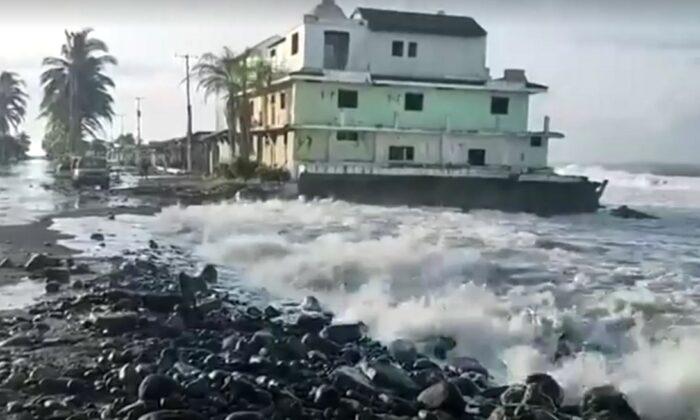Tropical Storm Sally is now the 18th named storm of the 2020 Atlantic hurricane season.
Sally—also the earliest 18th named storm on record—has already brought heavy rain and gusty winds to Florida Saturday as the storm moved into the Gulf of Mexico today.
Flood watches are in effect through Sunday for areas of Florida’s west coast including Tampa, Bradenton, Port Charlotte and Fort Myers. In these areas, 2 to 4 inches of rain is expected through the weekend.
Hurricane Watches and Tropical Storm Watches have already been issued along the Gulf Coast from Louisiana through the panhandle of Florida.
Most forecast models have Sally moving toward the northern Gulf Coast and likely making landfall somewhere between New Orleans and Panama City by late Monday or Tuesday, however if the track shifts farther west or slows down, landfall may hold off until Wednesday.
“The cyclone will likely become a hurricane in 2 to 3 days, although an increase in vertical shear could slow the rate of intensification over the northern Gulf of Mexico,” according to the National Hurricane Center.
Once it reaches that area of the Gulf Coast the steering patterns break down and the system meanders near the coast.
Whether the meandering is offshore prior to a landfall or onshore will not make much of a difference in terms of rainfall. In either case, because of the slow forward movement along the Gulf Coast significant flooding is possible.
As of right now, widespread rainfall accumulations of 4 to 6 inches are likely. However, there will be isolated areas right along the coast that could pick up more than a foot of rain.
Another system, Tropical Storm Twenty, has formed in the central tropical Atlantic, according to the NHC. Twenty has sustained winds of 35 mph.
Already an Active Season
So far this season, we have seen 18 named storms. The average for an entire season is 12. Early in the season, forecasters called for a very active season.Many storms broke records for being the earliest named to date, including Cristobal was the earliest named “C” letter storm in recorded history and Hanna was the earliest “H” letter storm. All but three named storms (Arthur, Bertha and Dolly) set records for being the earliest named storm for their respective letter.
Sally is just one of several systems in the Atlantic. The NHC is currently watching six areas: two tropical storms, two tropical depressions, and two tropical disturbances. Thursday marked the peak of the Atlantic hurricane season.
La Niña is Officially Here
On Thursday the National Oceanic and Atmospheric Administration announced they are issuing a La Niña Advisory, meaning La Niña conditions are present in the central and eastern Pacific Ocean.In a typical El Niño phase, much of the Pacific Ocean is characterized by warmer waters, whereas La Niña features a cooling of those same Pacific waters. In the case of hurricanes, La Niña weakens high atmospheric winds, which allows warm air pockets to grow vertically and develop into hurricanes.




